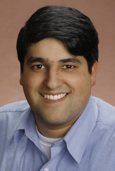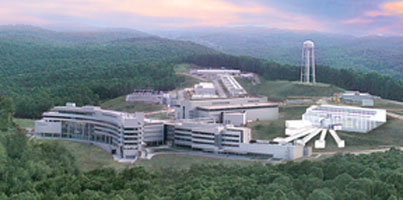| Research
|
In 2004 DOE's Sandia National Laboratories initiated an investigation into potential security vulnerabilities in common off-the-shelf videoconferencing systems after a Sandia technologist discovered a security problem with videoconferencing software. Project leaders enlisted the help of college interns in Sandia's Center for Cyber Defenders. Navid Jam was one of those interns. Jam and the team performed a variety of attacks to demonstrate vulnerabilities. The objective was to develop best practices and tools to help users. Mitigating the risks proved to be fairly simple. The bigger challenge was educating people about the need for security with videoconferencing devices. "People . . . should understand that a videoconferencing device operates much like a PC and as such requires protection such as a firewall program," says Jam. Jam, who was hired by Sandia in 2005, began giving talks at DOE, DoD, and public Internet security conferences. He talked to anyone interested in learning about the risks of embedded collaboration systems. "He really stood out and took the lead to advertise these types of vulnerabilities," said Sandia technologist Corbin Stewart, who originally discovered the videoconferencing vulnerability. A breakthrough came in 2006 when Jam met with the National Security Agency Red Team and shared the issues and solutions Sandia had identified. "They really championed our cause and helped us gain fairly high visibility throughout the government," says Jam. The small, internal project grew into a larger program with funding from government agencies and videoconferencing systems vendors. Last fall, Jam was chosen as one of three finalists for NSA's 2008 Frank B. Rowlett Award, which recognizes excellence in information systems security. The award typically stays within the armed services; Jam was the only nonuniformed individual nominee. Jam says it's been rewarding to see the impact of his work on a broad spectrum of customers. "I think this shows recognition of the important role national laboratories play in information assurance and cyber security for the nation." Submitted by DOE's Sandia National Laboratories |
|||||||||||||||||||||||||
|
Check out the joint Fermilab/SLAC publication symmetry.
|
Basic research for energy security:
The United States faces a grand challenge: finding alternatives to fossil fuels and improving energy efficiency to meet our growing energy needs over the next century and beyond. Scientists from DOE's Brookhaven, Los Alamos, Argonne and Oak Ridge National Laboratories, among others, are working to advance renewable, sustainable sources of energy such as solar, wind, hydro, and biofuels/biomass, and seeking innovations in producing, converting, transmitting, storing, and using energy. Together with researchers from the University of California, MIT and the Center for Study of Science, Technology and Policy, they'll present their collaborative approach as a "Call to Action" at the annual meeting of the American Association for the Advancement of Science (AAAS), Friday, February 13, 2009, 8:30 to 11:30 a.m. Central Time at the Hyatt Regency Chicago, Grand F.
|



